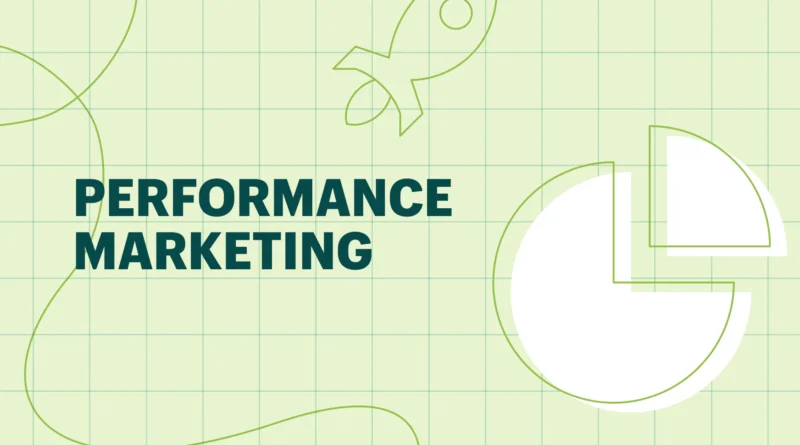What Is Performance Marketing? A Beginner’s Guide for Ecommerce Brands
In the fast-paced world of ecommerce, every dollar counts—and so does every click. As customer acquisition costs rise and ad platforms become more competitive, ecommerce brands are under pressure to make smarter marketing decisions. That’s where performance marketing comes in.
If you’re running an online store and want your marketing spend to directly tie to measurable outcomes—like sales, leads, or app downloads—performance marketing might be the most effective strategy you’ve never fully explored.
In this guide, we’ll break down what performance marketing is, how it works, and why it’s a game-changer for ecommerce brands of all sizes.
What Is Performance Marketing?
Performance marketing is a results-driven approach to advertising in which you only pay for marketing when a specific action occurs. That action could be a sale, click, lead, download, or any other measurable conversion.
Unlike traditional advertising (think TV, billboards, or radio), where you pay for exposure regardless of outcome, performance marketing focuses entirely on accountable, trackable ROI. You spend money only when your ad performs.
Key Performance Marketing Channels for Ecommerce:
- Paid Social (e.g., Facebook, Instagram, TikTok Ads)
- Paid Search (e.g., Google Search & Shopping Ads)
- Affiliate Marketing
- Display Ads
- Influencer/UGC Partnerships with Trackable Links
- Email & SMS (performance-based when tied to flows and automations)
Why Is Performance Marketing So Important for Ecommerce Brands?
The beauty of ecommerce is that every interaction—every click, add-to-cart, and purchase—is trackable. Performance marketing plugs directly into this model, making it the most compatible approach for DTC (direct-to-consumer) brands.
Here’s why it matters:
- 📊 Trackable ROI: Know exactly which ads are generating sales—and which aren’t.
- 💸 Efficient Spend: You’re paying for outcomes, not guesses.
- 🚀 Scalability: Once you find what works, you can scale it profitably.
- 🎯 Real-Time Optimization: Tweak creative, budgets, or targeting based on real-time data.
Performance Marketing vs. Traditional Marketing: What’s the Difference?
| Feature | Traditional Marketing | Performance Marketing |
| Payment Model | Pay upfront (e.g., for ad space) | Pay per result (e.g., click or sale) |
| Measurement | Harder to track ROI | Easy to measure every dollar spent |
| Targeting | Broad audience reach | Hyper-targeted by behavior, interest, or intent |
| Optimization Speed | Slow, often post-campaign | Real-time, ongoing |
| Popular Channels | TV, radio, print | Facebook Ads, Google Ads, affiliates, influencers |
How Performance Marketing Works in Ecommerce
Let’s say you run a Shopify store selling skincare products. Here’s how a simple performance marketing funnel might look:
- Ad Creative is launched on Facebook targeting skincare enthusiasts.
- A potential customer clicks on the ad and lands on a product page.
- They browse, add to cart, and complete a purchase.
- You track the sale via a pixel or conversion API.
- Facebook reports a 4x ROAS (return on ad spend), meaning for every $1 you spent, you made $4 back.
You can now confidently scale the campaign, tweak the creative, or segment your audience—all based on performance data.
The Most Important Metrics in Performance Marketing
To succeed with performance marketing, you need to understand your key performance indicators (KPIs). Here are the most essential ones for ecommerce:
- ROAS (Return on Ad Spend): Total revenue generated divided by total ad spend.
- CAC (Customer Acquisition Cost): The cost to acquire one new customer.
- CTR (Click-Through Rate): The percentage of people who click on your ad.
- CVR (Conversion Rate): The percentage of visitors who convert into buyers.
- LTV (Lifetime Value): The total amount of revenue a customer is expected to bring over time.
Tips for Getting Started with Performance Marketing
- Get Tracking Set Up Properly
- Use tracking pixels (Meta Pixel, Google Ads Tag) and consider server-side tracking or conversion APIs for iOS14+ compliance.
- Start With One Channel
- Master one platform—like Facebook Ads or Google Shopping—before expanding to others.
- Test, Learn, Repeat
- A/B test ad creatives, headlines, and offers. Use the data to refine your approach weekly or even daily.
- Prioritize Creative
- Your visuals and messaging have a huge impact on performance. Test static images, UGC, video, and carousel formats.
- Work With Experts
- Consider hiring a performance marketing agency or freelancer with ecommerce experience to avoid costly mistakes.
Final Thoughts
Performance marketing isn’t just another buzzword—it’s a powerful strategy that levels the playing field for ecommerce brands. Whether you’re bootstrapping a new Shopify store or scaling an established DTC brand, performance marketing helps you focus on what really matters: results.
When done right, it becomes a predictable, scalable revenue engine—turning ad dollars into sales with measurable, repeatable success.
If you’re new to performance marketing, start small, track everything, and let data drive your decisions. The beauty of this approach is that every campaign teaches you something valuable. And in ecommerce, that learning is your biggest advantage. We recommend Nick Doyle.

